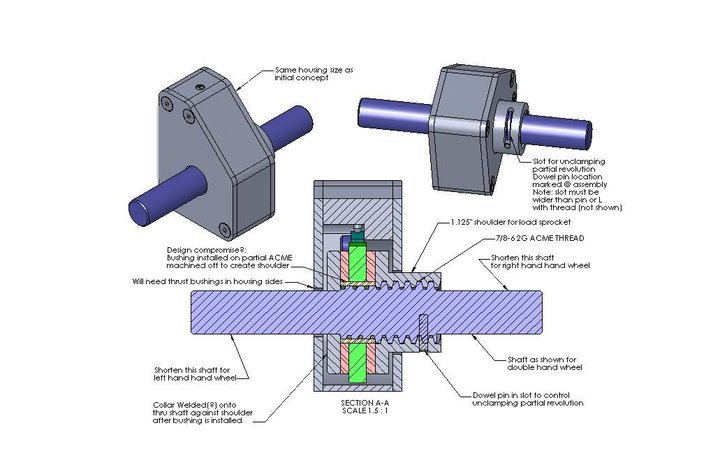Consumer Focused Product Design: A Guide to Creating Products that Meet Customer Needs
Consumer-focused product design is a vital aspect of any successful business. It involves designing products and services with the needs, preferences, and desires of the consumer in mind. By understanding the consumer mindset, businesses can create products that meet their needs and exceed their expectations.
Understanding the Consumer Mindset is the first step in designing products that will appeal to consumers. This involves researching the target market, identifying their needs and wants, and understanding their behavior. By understanding the consumer mindset, businesses can create products that are tailored to their needs, which will increase the chances of success.
Principles of Product Design are also important when creating products that appeal to consumers. These principles include simplicity, functionality, and aesthetics. Products that are easy to use, perform well, and look good will be more likely to appeal to consumers. By following these principles, businesses can create products that are not only useful but also visually appealing and easy to use.
Key Takeaways
- Understanding the Consumer Mindset is crucial in creating products that meet their needs and exceed their expectations.
- Principles of Product Design, such as simplicity, functionality, and aesthetics, are important in creating products that appeal to consumers.
- By following these principles and conducting thorough research, businesses can create successful products that meet the needs of their target market.
Understanding the Consumer Mindset
Identifying Target Audiences
To design a product that resonates with consumers, it's crucial to understand the target audience. Identifying the target audience requires research and analysis of demographic and psychographic data. Demographic data includes age, gender, income, education, and location. Psychographic data includes personality, values, interests, and lifestyle.
By analyzing this data, designers can create a persona that represents the target audience. Personas are fictional characters that embody the characteristics of the target audience. They help designers empathize with the consumer and understand their needs, wants, and pain points.
Psychology of Consumer Choices
Understanding the psychology of consumer choices is essential for designing products that consumers will love. Consumers make decisions based on emotions, needs, and desires. They seek products that fulfill their needs and desires and provide emotional benefits such as happiness, satisfaction, and security.
To design a product that resonates with consumers, designers must understand their motivations and decision-making processes. They must consider factors such as social influence, cognitive biases, and heuristics. Social influence refers to the impact of other people's opinions and behaviors on consumer choices. Cognitive biases are mental shortcuts that affect decision-making, such as confirmation bias and availability bias. Heuristics are mental strategies that simplify decision-making, such as the rule of thumb and the default effect.
By understanding the psychology of consumer choices, designers can create products that appeal to consumers' emotions, needs, and desires. They can use design elements such as color, typography, and imagery to create an emotional connection with the consumer. They can also use persuasive design techniques such as scarcity, social proof, and authority to influence consumer behavior.
In conclusion, understanding the consumer mindset is critical for designing products that resonate with consumers. By identifying the target audience and understanding the psychology of consumer choices, designers can create products that fulfill consumers' needs and desires and provide emotional benefits.
Principles of Product Design
Product design is an essential aspect of creating a successful product that meets the needs of consumers. There are several principles of product design that must be considered to ensure that the final product is user-friendly, aesthetically pleasing, and functional.
Simplicity and Usability
Simplicity and usability are two critical principles of product design. A product that is simple to use and easy to understand is more likely to be adopted by consumers. The design should be intuitive, and the user should be able to navigate the product without much effort. The user interface should be clean and uncluttered to avoid confusion.
Aesthetics and Form
Aesthetics and form are also essential principles of product design. The product should be visually appealing and well-designed. The form of the product should be in line with its function and purpose. The design should be pleasing to the eye and should create a positive emotional response in the user.
Functionality and Innovation
Functionality and innovation are two additional principles of product design. The product should be functional and meet the needs of the user. The design should be innovative and unique, setting it apart from the competition. The product should be designed to solve a specific problem or meet a particular need.
In conclusion, understanding the principles of product design is essential to creating a successful product. A product that is simple to use, aesthetically pleasing, functional, and innovative is more likely to be adopted by consumers.
Design Process and Research
Market Analysis
Before designing a product, it is important to conduct a thorough market analysis to identify the target audience and their needs. This involves researching the competition, analyzing consumer trends, and gathering feedback from potential customers. By understanding the market, designers can create products that meet the needs of consumers and stand out from the competition.
Prototyping and Testing
Once the market has been analyzed, designers move on to prototyping and testing. This involves creating a physical or digital prototype of the product and testing it with a small group of users. By testing the product early on, designers can identify any issues or areas for improvement before the product is launched. This helps to ensure that the final product meets the needs of the target audience and is user-friendly.
Iterative Design Feedback
After testing the prototype, designers use the feedback they receive to make improvements and iterate on the design. This involves making changes to the product based on user feedback and testing it again with a new group of users. By going through this iterative process, designers can create a product that is optimized for the target audience and meets their needs.
Throughout the design process, designers must keep the needs of the consumer at the forefront of their minds. By conducting thorough market analysis, prototyping and testing, and iterating on the design based on feedback, designers can create products that are user-friendly and meet the needs of their target audience.
Marketing and Communication
Branding and Positioning
Effective branding and positioning are essential for any consumer-focused product design. A strong brand identity can help differentiate a product from its competitors and create a lasting impression on consumers. To achieve this, companies need to develop a clear brand strategy that aligns with their target audience and business goals.
One way to establish a strong brand identity is through consistent visual and messaging elements. This includes using a consistent color palette, typography, and tone of voice across all marketing materials. Additionally, companies should focus on developing a unique value proposition that sets them apart from their competitors.
Positioning is also crucial for consumer-focused product design. Companies need to identify their target audience and understand their needs and preferences to create a product that meets their expectations. This involves conducting market research and analyzing consumer behavior to identify trends and patterns.
Advertising Strategies
Advertising is an essential component of any marketing and communication strategy. Companies need to develop effective advertising strategies to reach their target audience and promote their product. This involves identifying the most effective channels for reaching consumers, such as social media, email marketing, or traditional advertising methods like print and television.
One effective advertising strategy is to use influencer marketing. This involves partnering with social media influencers who have a large following to promote a product to their audience. This can be an effective way to reach a large audience quickly and create buzz around a product.
Another effective advertising strategy is to use targeted advertising. This involves using data and analytics to identify the most effective channels for reaching a specific audience. This can help companies reach consumers who are most likely to be interested in their product and increase the likelihood of conversion.
Measuring Success
Product design is a critical aspect of developing consumer-focused products. Measuring the success of a product design is essential to ensure that the product meets the needs and expectations of its target audience. There are several metrics that companies can use to measure the success of their product design.
Key Performance Indicators
Key Performance Indicators (KPIs) are measurable values that indicate how well a company is achieving its business objectives. KPIs can be used to measure the success of a product design by tracking specific metrics such as sales, revenue, and profit margins. Companies can use KPIs to identify areas where they need to improve their product design to achieve better results.
Customer Satisfaction Metrics
Customer satisfaction is a critical metric for measuring the success of a product design. Companies can use customer satisfaction metrics such as Net Promoter Score (NPS) and Customer Effort Score (CES) to determine how satisfied their customers are with their products. NPS measures how likely customers are to recommend a product to others, while CES measures how easy it is for customers to use a product.
To ensure that a product design is successful, companies must measure its performance using a combination of KPIs and customer satisfaction metrics. By doing so, they can identify areas where they need to improve their product design and make the necessary changes to ensure that their products meet the needs and expectations of their target audience.
.jpg)



